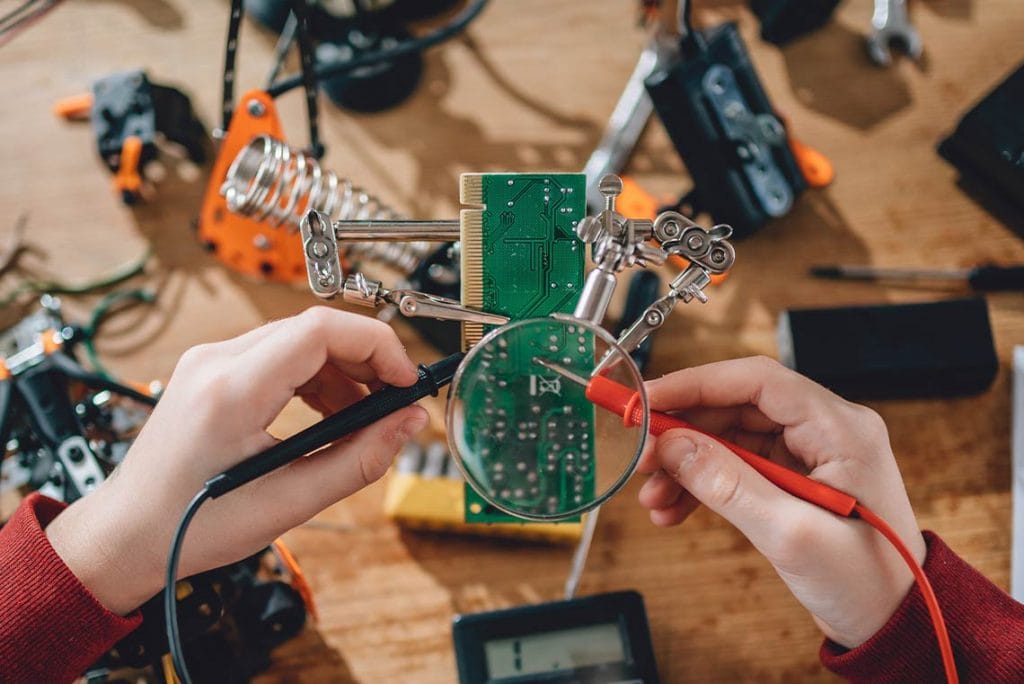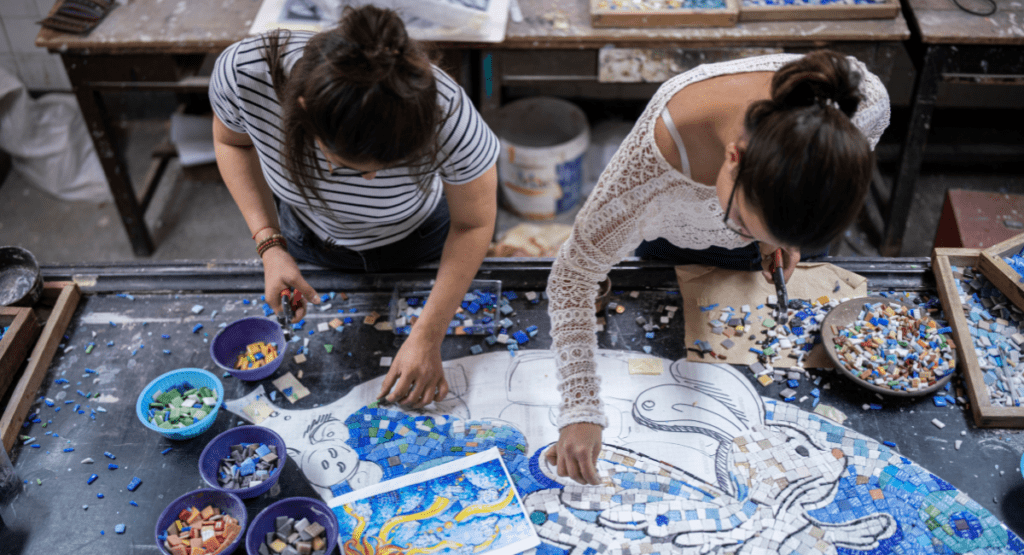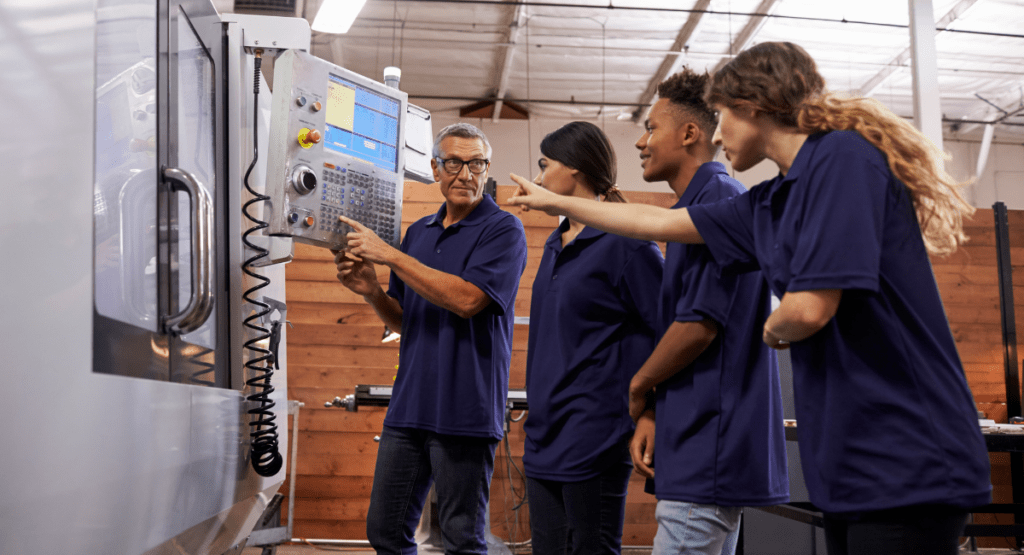In customized learning, students choose when, where, and how they want to learn. They select from a palette of learning options, all of which allow them to show that they’ve mastered learning competencies. Students can then bundle these competencies into credit.
The by-product? Students learn in ways that allow them to maximize their strengths while working at a comfortable pace.
Projects are one learning option that gives students a taste of real-world problem-solving by allowing them to master competencies through in-depth research and application.
Competencies comprise credit. Students can shape that credit with any combination of competencies mastered through various pathways: projects, traditional online courses, experiences, or college work.
With project-based learning, each project addresses one competency. For example, a student would complete approximately eight projects to earn full credit in a competency group, like Physical Science or English 1.
Typically, students who want to try project-based learning could do one or two projects from a competency group and then mix and match from the other pathways to complete the remaining competencies in that group to earn the rest of the credit.
Projects are designed to take about three or four weeks to complete but can take longer or shorter, depending on the student and the amount of time he or she needs. Students can accelerate or have additional time to master competencies.
How do projects work?
Project-based learning offers creative, real-world approaches to master competencies outside traditional courses. In each project, the student assumes the role of a particular career professional. They solve problems or address issues that someone in this career might face every day–and they master the content and skills of the competency.
Picking Pathways
For example, for a student to earn a credit in the U.S. Government competency grouping, he or she would enroll in all of the competencies and then choose how to master each– projects, courses, or experiences.
The U.S. Government competency grouping has projects in which students assume the role of an Immigration Specialist to learn about the rights and responsibilities of citizenship, or they can be a Political Risk Analyst as they learn about U.S. foreign policy.
Even though projects are pre-designed, students select one based on their interest in the career aspect and the project itself. Each competency grouping includes various career themes, so there is something for everyone. Projects should match something students want to explore in-depth and something they’re excited to learn.
The beauty? Students can peruse the competencies and projects comprising a credit before registering.
For that U.S. Government credit, students and typically a parent or guidance counselor review the competencies in the competency grouping to determine which ones they need for credit. Then, as students enroll, they decide how to achieve them — projects, experiences, and courses.
Students who choose projects register for the competency grouping, participate in the standard welcome call with a parent or guardian, and take it from there.
Accountability
Students meet regularly with their VLACS instructor for their project. They check in, ask questions, and demonstrate mastery of the project’s assessments.
Instructors will give feedback, ask questions, provide examples, and offer support to help students complete projects.
They are also accountable for ensuring that the learning makes a direct impact on helping students demonstrate mastery of the competency.
Meet Audrey
For high school junior Audrey Lapinsky, a full-time VLACS student in Jaffrey, NH, completing the Physical Science competency grouping solely as a course didn’t appeal to her.
She opted to master one of the Physical Science competencies with a project.
Audrey selected the project for the Electricity Competency. She said she wanted something hands-on, that would give her the flexibility to learn about electricity not just through reading and watching videos, but by creating something.
By nature, Audrey likes to tinker. She explains that her grandfather built a leather studio, where she’s been experimenting with leatherwork. She also likes weaving. “I made my own little loom,” she says. “I use regular yarn,” she explains, “nothing fancy, so I can learn.”
From Yarn To Robots
For the Physical Science Electricity project, she took a similar approach. Tinkering is key to Toy Design, the career theme for the Electricity Project. “I actually got to design a robot,” she says.
Audrey needed to show that she understood circuits and how they worked for part of the electricity competency. She discussed options with her instructor, who explained that she could design a car, a boat, or a robot.
She chose a robot. Through her public library, she accessed 3-D design software, where she designed a robot that could roll around on an internal rechargeable battery.
Audrey says that she had to research some mechanical design principles, too, to design the pistons and the three wheels. Audrey says that the career piece made her think about how a child would play the robot. It affected her design.
Audrey designed the robot to have light-up eyes, buttons, and a mid-section drawer. She says she added that piece because she thought if she ever built the robot, her sisters would have a way of transporting notes to each other, a favorite activity.
She got so excited about her project that she tried to design a remote control, too. That proved harder than she expected, but she hopes to return to it someday.
For Audrey, who has been taking VLACS courses as a full-time student for the past two years, projects were a welcome alternative.
Robots and Beyond
Audrey says, “I think it took a little bit longer than regular courses. I get into my stuff. I’m a fast worker and generally work ahead of pace. This one was more on-pace.” The competency took her about a month to finish.
She adds, “In projects, there are questions and more questions. Questions towards work that you’ve done. You’re still doing the learning part. And then you have to answer the questions about progress.”
Audrey explains that she learned a lot not just about Physical Science and electricity, but about how to ask questions and how to find the answers.
One of the things she liked best about her VLACS project? She had some choice within the project itself-and she exceeded the expectations of mastery in her electricity competency.
She’d definitely do a project again she says.
Anytime, Anywhere
With project-based learning, students work with instructors to complete a pre-designed project. Each project addresses one competency and delves deeply into problem-solving, research, and career connections.
Interested in learning more about projects and anytime, anywhere learning? Learn more about VLACS. With the project-based learning, you work with instructors to design a project around a competency and delve deeply into problem-solving and research.
Interested in learning more about projects and anytime, anywhere learning? Attend a live open house webinar! Register here.



